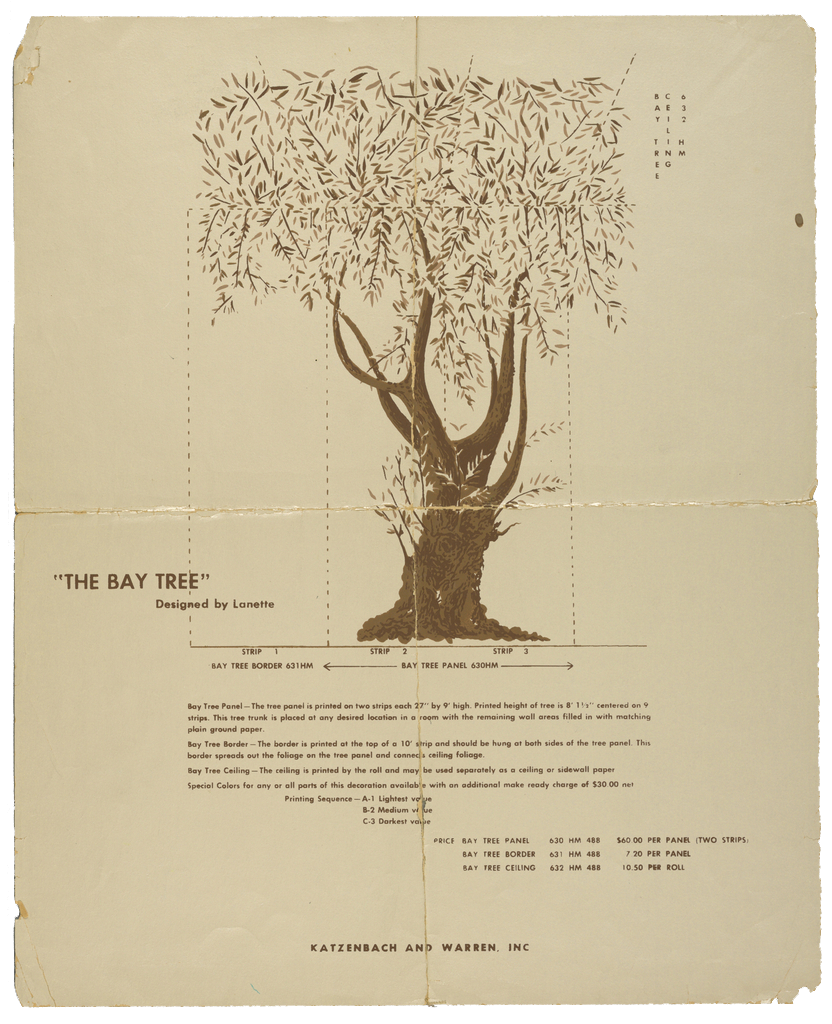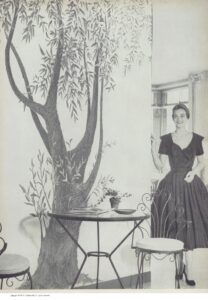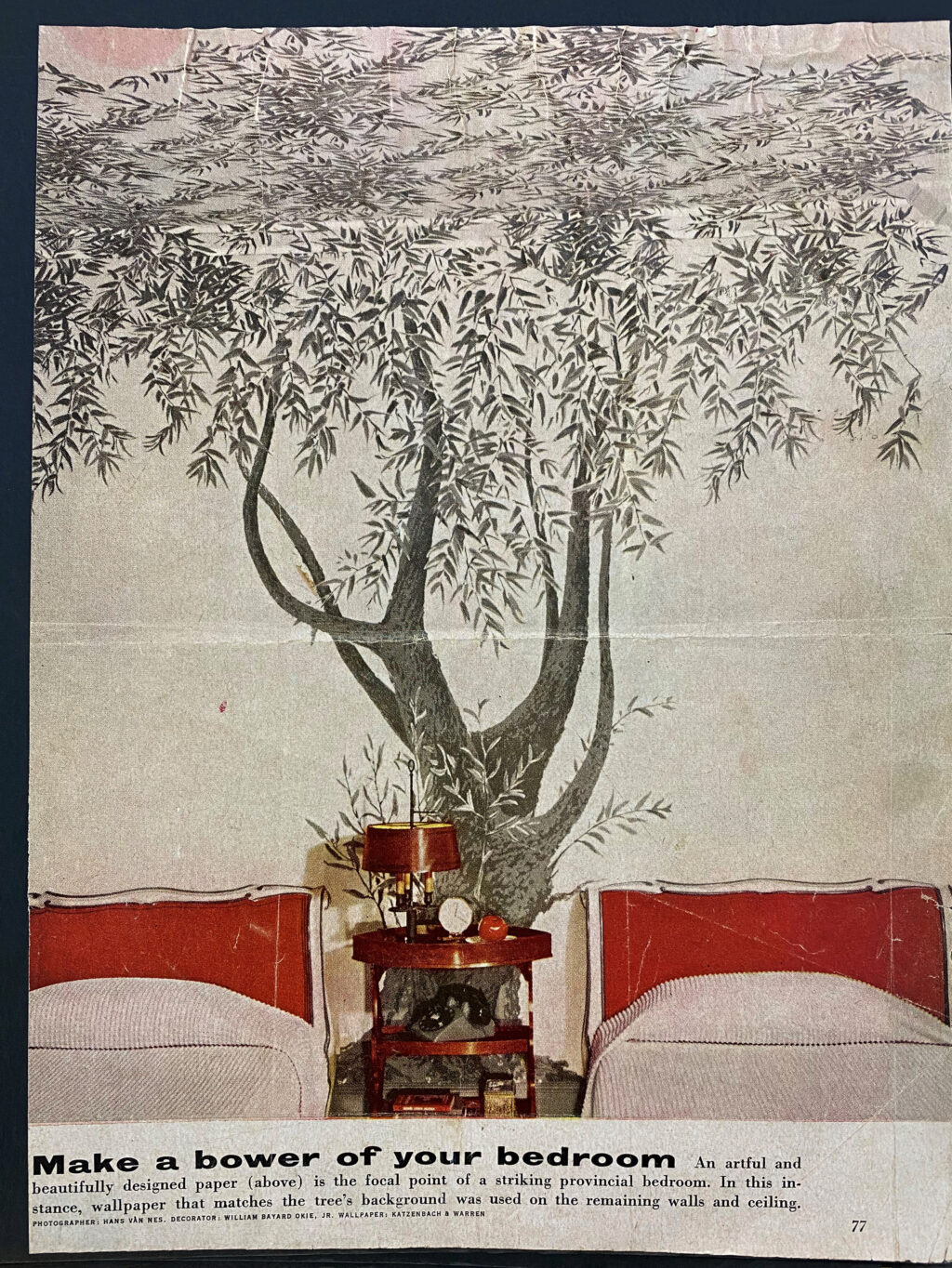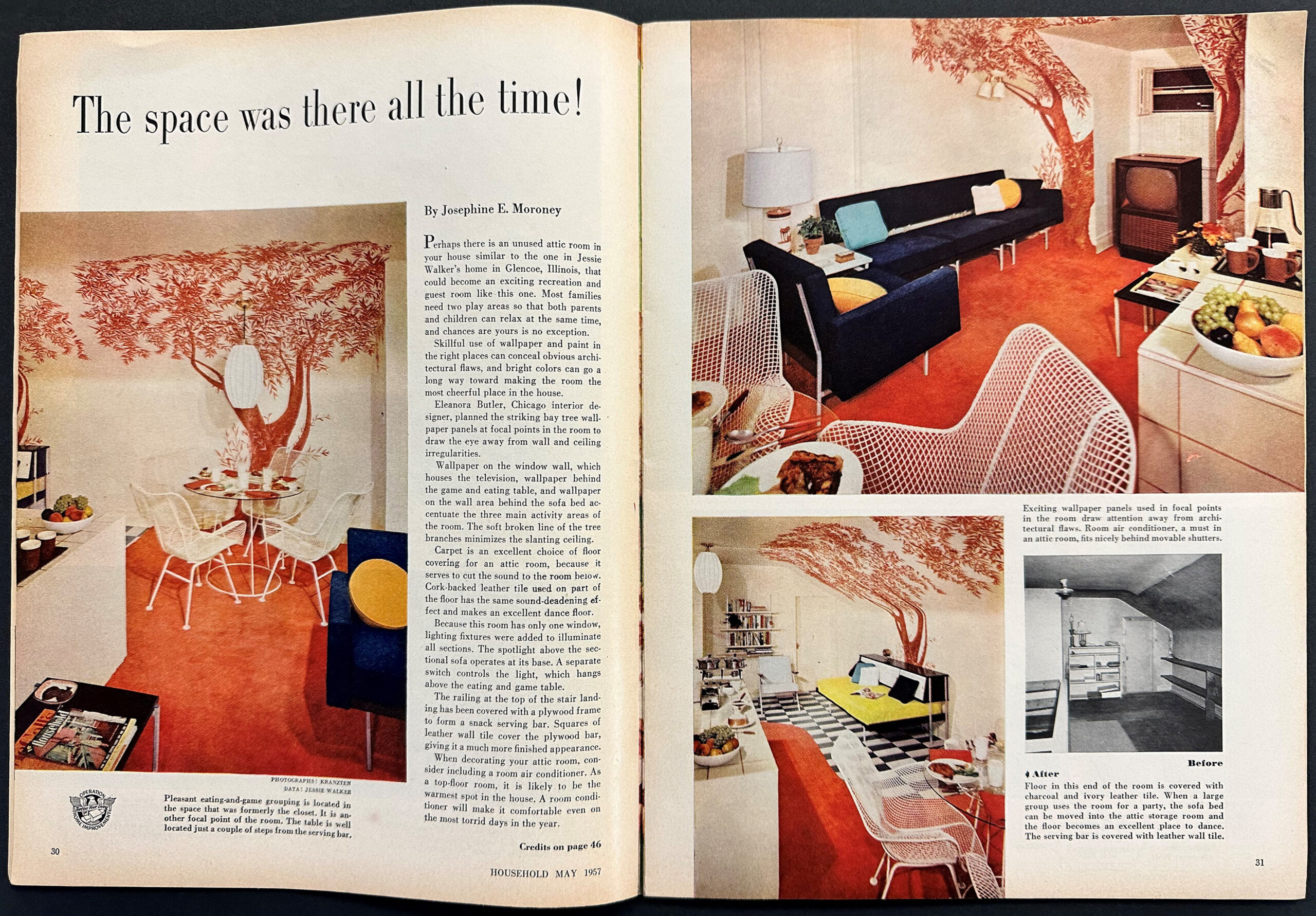
Mural Miniature, The Bay Tree, 1954; Designed by Lanette Scheeline (American, 1910–2001) for Katzenbach & Warren, Inc. (New York, New York, USA); Screen-printed paper; 47 x 38.5 cm (18 1/2 x 15 3/16 in.); Gift of Lanette Scheeline, 1998-29-76
Designer Lanette Scheeline started her career in northern California during the 1930s. Notable achievements during this period included designing screen-printed fabrics for Louma Prints and exhibiting several of her textiles at the Golden Gate International Exposition (1939 and 1940). After World War II, she opened her own studio where she created custom textiles and wallcoverings for a growing audience that embraced an increasingly progressive and modern style of home design. With an emphasis on indoor-outdoor living, comfort, ease, and natural materials, this style would eventually be known as California Modernism. Scheeline responded to her clients’ needs by providing custom designs that referenced the Sausalito seaside of California and the surrounding rural areas. She also developed an unconventional approach in her depictions of trees, flowers, and fruits, creating large-scale, unique patterns inspired by local flora, Japanese woodblock prints, and botanical illustrations. In these early years of her career, she chose to work with linoleum block printing, which allowed her to custom print only what was needed for each client.
During this same period, the innovative New York wallpaper firm Katzenbach & Warren was responding to a pent-up demand for new home products and invited Scheeline to design for the company in the late 1940s. The principals of the company not only welcomed an eclectic group of designers, such as Marion Dorn, Ilonka Karasz, Tina Leser, and Zue Martin, but also relied on them to develop new styles that catered to many different tastes.[1] Adding Scheeline into their roster of designers brought her West Coast aesthetic to the East Coast, and Katzenbach & Warren promoted Scheeline in their advertisements as “Lanette of California” or identified her wallpapers as “Designed by Lanette.”
In 1954, the company introduced the “Tree” series of murals that Scheeline designed depicting full-sized trees that ran up the wall and extended onto the ceiling. The series was prompted by William Katzenbach, who was quick to observe that the open-plan, modern home, with picture windows and built-in furniture, left smaller sections of wall space remaining, inviting new approaches to wallcoverings. Unlike the wallpaper murals of the past, where the design was comprised of many panels, all designed to run continuously around the room, Scheeline’s Tree murals were designed to be seen singly or in small groups.

Anne Marie Acoca is pictured beside Katzenbach & Warren’s Bay Tree wallpaper, photograph by James Abbe, Jr. “Portraits and Backgrounds,” Town & Country (Oct. 1954), 79; ProQuest, Women’s Magazine Archive Collection 2; accessed March 24, 2023
In October 1954, Town & Country magazine published a series of portraits of women styled against different backdrops. Anne Marie Acoca, wife of the Panamanian journalist Miguel Acoca, appeared next to Scheeline’s Bay Tree wallpaper mural (above). Standing in an entry way, Acoca is dwarfed by the design, which covers the wall, forming a backdrop for the traditional wrought iron garden furniture that suggested an outdoor setting. Good Housekeeping in 1955 took a different approach, using Bay Tree as a backdrop for two twin beds separated by a nightstand (below). Here the wallpaper runs onto the ceiling, creating a leafy canopy for the bedroom’s occupants in the manner suggested by the Mural Miniature (top) where the break between the wall and ceiling is indicated by a dashed line. A matching wallpaper with the same background color was used for the remaining bedroom walls and ceiling.

“Make a bower of your bedroom,” Good Housekeeping (May 1955), 77; Scrapbook, Lanette Scheeline Archive, Cooper Hewitt, Smithsonian Design Museum
Perhaps the most ambitious approach to this unusual wallpaper was undertaken by Household magazine in 1957, which used Bay Tree in three areas to camouflage the limitations of an awkward attic room (below). The leafy upper branches take attention away from the slanting line of ceiling and was cleverly used to surround a small niche holding a television set. Each tree served to create three distinct areas for dining, relaxing, and watching television.

Josephine E. Moroney, “The Space Was There All the Time!” Household (May 1957), 30–31; Private collection
Scheeline’s tree designs for wallpaper provided inventive wall-treatment options suitable for modern spaces as well as a fresh take on ceiling papers, long popular in American interiors. These wallpaper murals also brought the landscape indoors, drawing upon Scheeline’s earlier experiences designing flexible, functional spaces for her Californian clients.
Kimberly Randall is the Collections Manager for the Textiles Department at Cooper Hewitt.
Notes
[1] “New Wallpapers Odd in Technique: Patterns Link Fine Details of Pen-and-Ink Sketch with Soft Blended Colorings,” New York Times (Feb. 25, 1954), 27.